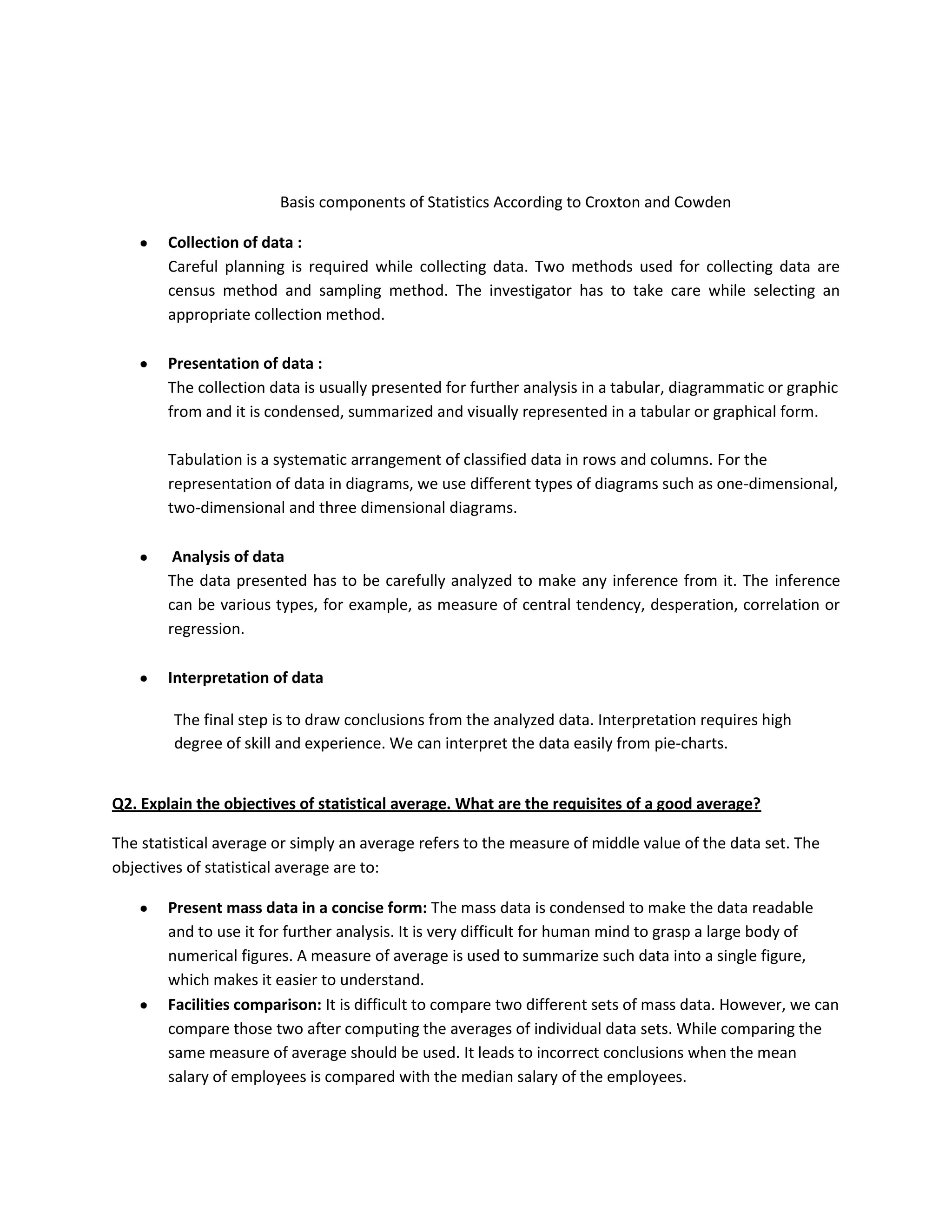This document contains information about a student named Vinay Aradhya enrolled in an MBA program. It includes responses to four questions on statistics.
Q1 defines characteristics of statistics such as dealing with numerical data collection and analysis, and being affected by multiple causes. Q2 explains that statistical averages summarize data, facilitate comparison, and provide a basis for decision making. It lists requisites of a good average.
Q3 lists characteristics of the Chi-square test as being based on frequencies, non-parametric, and useful for testing independence between attributes. Q4 defines a cost of living index and discusses methods for its construction, including the aggregate expenditure and family budget methods with an example of each.







